Matador Network's Blog, page 877
April 20, 2020
Apricot Stone virtual restaurant

If you miss eating out at restaurants, you’re not alone. Even if you’ve been cheffing up your favorite meals and getting creative in your own kitchen, there’s no replacing the classic restaurant experience, and takeout meals just aren’t the same.
To remind you of the good old days when you could actually leave the house, drive to your favorite food spot, and enjoy the atmosphere, one Philadelphia establishment is attempting to recreate the dining out experience for customers in their own home.
Apricot Stone, a family-run restaurant in Philadelphia’s Northern Liberties neighborhood, is using FaceTime, Duo, and Skype to simulate the experience of being at a restaurant. To participate in the immersive experience, customers must call Apricot Stone and make a dinner reservation. Following the call, they will be emailed a food and beverage menu.
At the reservation time, the front-of-house manager will reach out via video chat from the restaurant’s dining room; he will seat you at a fully-set table, with music playing in the background, walk you through the menu, and take your order. Your food (Apricot Stone specializes in Armenian, Mediterranean, and Middle Eastern flavors) will then be delivered to your home by the restaurant’s waitstaff. After one more call from the manager, to ensure that everything arrived on schedule, you’ll be left to enjoy the meal at your own leisure.
And beyond the price of your meal, you’ll be expected to pay a 20 percent gratuity (added to the bill) to support the waitstaff that have now become delivery drivers. 

More like this: How you can help hospitality workers affected by COVID-19
The post This Philadelphia restaurant will video call you to recreate the much-missed dining experience appeared first on Matador Network.

April 17, 2020
Wild boars in Haifa, Israel

Living through this pandemic has been more difficult for some than others. For wildlife, it’s definitely been a holiday; from lions occupying golf courses in South Africa to goats taking over a town in Wales, animals are having a blast in the world’s currently empty streets, towns, and parks while we’re stuck at home.
In the Israeli city of Haifa, wild boars and their babies have made themselves very much at home, trotting the streets in large numbers and rummaging through garbage for snacks.
Wild boars, some as bulky as Rottweilers and traveling in family packs, have been trotting through the Israeli city of Haifa in increasing numbers https://t.co/3QhRmdBpTH pic.twitter.com/RQo1FlHIrm
— Reuters (@Reuters) April 17, 2020
Although boars are common in this part of Israel, they usually wander the city at night when no one is around. Now that the streets are devoid of humans and cars 24/7, they roam wherever and whenever they please.
The heavy presence of the boars is so serious that it’s providing a further incentive for residents to stay indoors.
Meiraf Litani, a local music instructor, said to Reuters, “We are scared to go out, even to throw out the garbage. I don’t know which way the boars will come. They come here and turn over our garbage dumpsters… This is a lack of protection. We actually feel defenseless.”
To assuage residents’ fears and keep everyone safe, “pig patrols” consisting of animal-rights activists have formed to shoo the board away and keep residents safe.
Yaron Hanan, who runs a campaign aimed at cracking down on the boar invasion, said, “I’m scared that after the coronavirus passes, the boars will have gotten used to coming every day, every night, every hour.” 

More like this: In these locked-down cities, animals are taking over the vacant streets
The post Wild boars descend on Israeli city of Haifa, terrifying residents appeared first on Matador Network.

Possible megadrought in Western US

As if the current global pandemic wasn’t already enough to deal with, a new contentious study published in the journal Science on April 17, 2020, suggests that the American West is undergoing a megadrought. A megadrought is a naturally occurring multi-decade event with periods of high severity.
The study says that this particular megadrought actually began in the year 2000 and is made worse by climate change. The effects of this drought are said to be extremely severe, leading to shrinking water reservoirs and recurrent wildfire events.
When researchers compared the worst 19-year drought events in the past to soil moisture records from 2000-2018, they discovered that the current period is worse than three of the four megadroughts on record. The fourth, which went from 1575 to 1603, was the worst in human history, but the present drought isn’t much better.
Dr. Park Williams, from Columbia University in New York, said, “The first two decades of this drought look just like the first two decades of all of the megadroughts. In fact, it is essentially tied with the worst two decades of the worst of the megadroughts.”
Of the current drought, Dr. Williams blames the El Niño/La Niña weather phenomena
“We know from many lines of evidence,” he said, “that when you have La Niña type conditions in the tropical Pacific Ocean, then the southwestern US and northern Mexico get dry. And that’s what we’ve seen over the last two decades.”
Whether the current drought is actually a megadrought or not, researchers agree on one point: Water is an essential resource in this part of the world that should be carefully preserved, especially considering the impact of climate change. 

More like this: The Climate Win: electric ‘robot’ deliveries and the scrapping of styrofoam
The post The Western US might be in the midst of one the worst megadroughts in history appeared first on Matador Network.

Human connection after COVID crisis
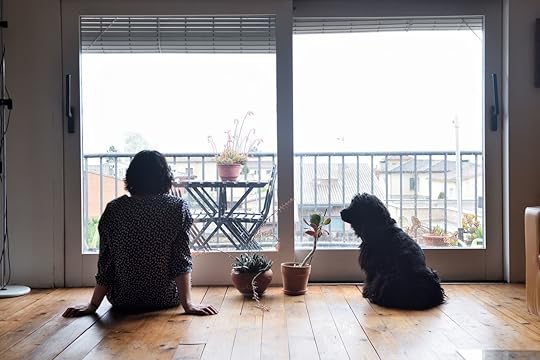
George Orwell’s famous dystopian novel, 1984, begins, “It was a bright cold day in April, and the clocks were striking thirteen.” What feels like an eternity ago, we woke up inside our own dystopia. It’s not exactly 1984 — at least those guys got to go outside — but you don’t need a totalitarian oligarchy to realize you’ve entered a painful new reality with no visible exit door. In movies and literature dystopian societies have a certain hopeless permanence. There’s a sense that the world was once good and full of freedom before a catastrophe ushered in a bleak age of restriction, and only the lucky ones can remember the green world of yesterday. Good thing is, we’re not in a fictionalized universe. It’s a cold day in April indeed, but our dystopia is just temporary. Getting through it isn’t about fondly remembering yesterday; it’s about looking forward to what we can expect once it’s over.
In a global pandemic, silver linings are a tricky business. Remaining optimistic is admirable, but harping on things like “perspective” and gushing about “the privileges we take for granted” during this crisis ignores the reality that people are seriously sick, and losing their lives and jobs on a daily basis. Even if you learned optimism from Ned Flanders himself, there’s very little about this moment in time that can be construed as positive.
Let’s instead imagine that we didn’t wake up one morning in a dystopian society, avoiding our friends and family and wondering when our lives will resume again. Imagine, instead, that the crisis is behind us. After a gradual easing of restrictions, the lockdowns are fully lifted. Quarantines are over. Self-isolators are emerging from their homes like they’re Cold War bunkers, rubbing their eyes in the sunlight. Costco’s shelves are overflowing with toilet paper, the lights in your favorite bar are back on, and social distancing — that new vocabulary word that hits you in the pit of your stomach — is no more. You might be looking forward to this day more than anything in the world, the day life gets “back to normal.” But when the pandemic is over, nothing about life will feel normal again — and that’s okay.
Turns out, the little things aren’t so little.
When the world finally reopens for business and the metaphorical shackles vanish, daily life won’t return to its pre-pandemic routine. For at least a few weeks, you might actually look forward to going to the gym. An in-person work meeting won’t feel like Coachella, but sitting around a table with your colleagues and a box of doughnuts isn’t going to seem quite so tedious. Going to a meaningless NBA game between two last place teams will feel like Game 7 of the finals, and the mere act of shaking hands will give you goosebumps. No, you probably won’t book a flight to Italy the minute travel is declared safe, but you might start getting excited about what that trip could look like.
According to CruiseCompete, a cruise booking website, bookings for 2021 are up by 40 percent compared to the same period in 2019. Of course, travel will look different. Most of us will have more reservations before boarding a plane and take greater care to avoid crowds. But we’ll still board the plane. We’ll remember when travel was completely out of the question, what it felt like to have our long-awaited trips canceled, and realize how important it is to seize our right to travel before that right disappears.
Reorganizing our social priorities
The most defining characteristic of our dystopia is the way social relationships have changed (or, in some cases, vanished). Like Black Mirror predicted, socialization now almost entirely revolves around technology. Zoom is our lifeline to the outside world, and in this new era of digital friendships, I’ve found myself chatting online with some of my most introverted friends — friends who normally require a forklift to leave their couch on a Saturday night. But when I signed onto Zoom this weekend, the first thing they asked was, “So, when do we think bars are opening?”
Maybe it’s all talk, and maybe it’s not. I have no doubt that these friends of mine will still maintain a solid 60 percent flake rate post coronavirus, but the fact that they’re even talking about venturing out of their houses with actual enthusiasm is remarkable. Some people will undoubtedly slip back into voluntary isolation after a few months of freedom, but until then, even the most introverted among us may eagerly anticipate a return to socialization.
Choosing to spend time alone will always be refreshing, and to varying degrees, we all need it. But choosing is the operative word. The choice to socialize, or not. Being deprived of that choice is like having your driver’s license revoked, and then being forced to sit in an idle car for weeks (or months).
The coronavirus didn’t introduce social distancing. It just made it a requirement. Humans have been socially distant with each other long before social distancing was state-mandated. Millennials are certified professionals at canceling plans. Every time we bail on a family BBQ because we’re too hungover, or don’t show up to a party because we’d rather binge The Crown, we’re practicing self-isolation. Now we know what it feels like to stay in when it’s not a choice. And that changes everything.
A temporary break from our humanity
The longer we live this Groundhog Day reality, the more we might wonder why lounging around the house feels so unnatural. On the face of it, it sounds like heaven. Catching up on TV shows (and sleep), Skyping with friends, reading, and realizing we have zero affinity for baking sourdough are all things we wish we had more time for in our normal lives. So why do we find ourselves Googling “Did we flatten the damn curve yet?” every morning?
Maybe because if we were lucky enough to escape with our jobs, health, and financial security, the virus still crippled us by taking away our relationships.
In this inhospitable dystopia, we’ve learned that our freedom to socialize can be revoked without warning. My friends who relish their alone time won’t suddenly change their personalities overnight, morphing into gregarious social creatures, but they might just emerge from this months-long Netflix marathon with an appreciation for their undervalued social relationships.
Because this lockdown isn’t about what we can or can’t do. It’s about who we are. Humanity isn’t a one-man show. Being human alone isn’t being human at all. More than trapping us in our houses, and taking away our bars and gyms and libraries, the virus took away the governing principle of our humanity — connection. When life is back in session, when the dystopia crumbles and our relationships are restored, our daily routine won’t feel normal. It’ll feel like an absolute privilege. And it’s up to us to keep it that way. 

More like this: How the rise of virtual drinking will change the way we socialize
The post Thanks for checking into the dystopia. We hope you learn something while you’re here. appeared first on Matador Network.

Costa Rica’s Osa Peninsula travel
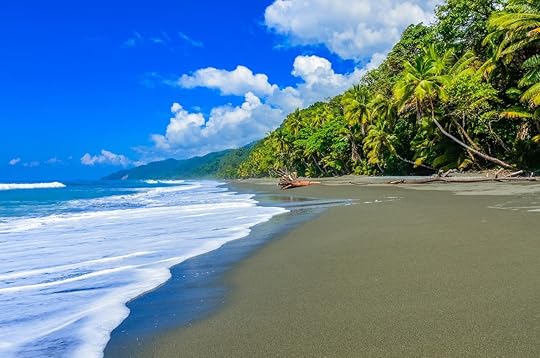
Volcanic cones raising from the dense jungle, bumpy backroads leading to booming waterfalls, miles of zipline cables stretching above the rainforest, and hidden beaches — Costa Rica is the ultimate playground for those seeking adventure and relaxation. The Osa Peninsula, a sliver of land located in the southwestern corner of the country, is among the country’s most remote and biodiverse regions — a Pacific enclave that allows for slow travel and cultural immersion without the crowds. Eco-lodge luxury notwithstanding, a trip here feels like stepping into Jurassic Park. Here’s how to explore the Osa Peninsula and find the perfect balance between relaxation and adrenaline.
Unwind at a luxury eco-lodge.
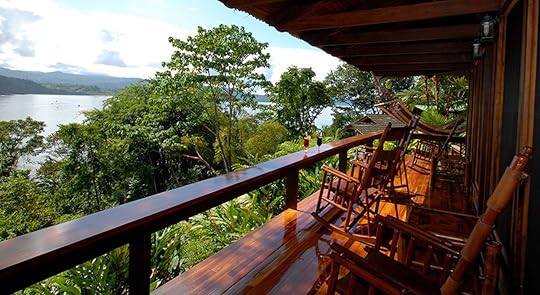
Photo: Aguila de Osa
Tourism in Costa Rica is all about sustainability and getting in touch with nature. Travelers will discover plenty of eco-lodges, each one implementing those values in their own creative way. Playa Cativo Lodge, on the coastline of Piedras Blancas National Park, is all about organic gourmet meals. The 1,000-acre property is home to a five-star hotel with its own permaculture garden where guests can acquaint themselves with all the fresh produce that will meet them on their dinner plate, from heirloom tomatoes to rosemary. The lodge is surrounded by a private beach where you can paddleboard, practice yoga, or simply zen out listening to the crashing waves. Staying at Playa Cativo is an invitation to be fully present and let go of stress, plunging into the private pool that accompanies your bungalow or meditating on how many shades of green you can count in the manicured garden.
On the peninsula’s northern tip, Águila de Osa is another boutique eco-hotel where guests will find themselves on the very edge of the Corcovado National Park’s rainforest, overlooking the lush hillside of Drake Bay. The prime-time activities here include napping in a hammock, horseback riding at sunset, or embarking on a guided night hike to get acquainted with the secret life of the property’s fluorescent frogs. Aguila de Osa lies right next to Caño Island Biological Reserve where marine life enthusiasts can fish, snorkel, and scuba dive.
Get up-close and personal with whales and dolphins.

Photo: PAUL ATKINSON/Shutterstock
Dubbed the last remaining “wild” side of Costa Rica, travelers to the Osa Peninsula often have the ability to see humpback whales and bottlenose dolphins in their natural habitat. While tours can be hit or miss, the chances to actually observe the marine mammals on the Osa are higher thanks to local tourism that’s geared towards eco-enthusiasts versus the selfie-stick-loving crowds. The best time to go on a whale- and dolphin-watching trip is from July to October.
Have a picnic on an untouched beach.
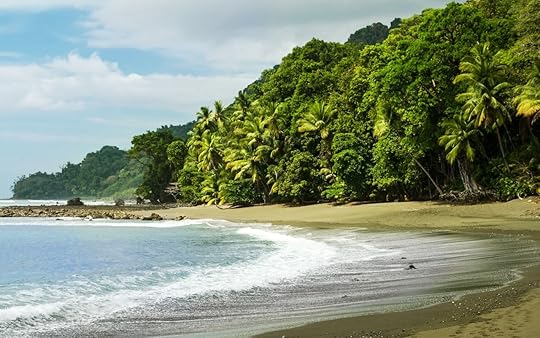
Photo: Malgorzata Drewniak/Shutterstock
Sometimes the ideal version of paradise is a hearty lunch on an untouched beach surrounded by turquoise water with no devices in sight. The Osa has plenty of quiet spots to explore, stretching from Palma to Agujas and Puerto Jiménez all the way down to the southern tip of the peninsula at Ojo de Agua. All of those can be navigated by boat for an afternoon of beach hopping.
Kayak with mangroves or explore underwater marine life.
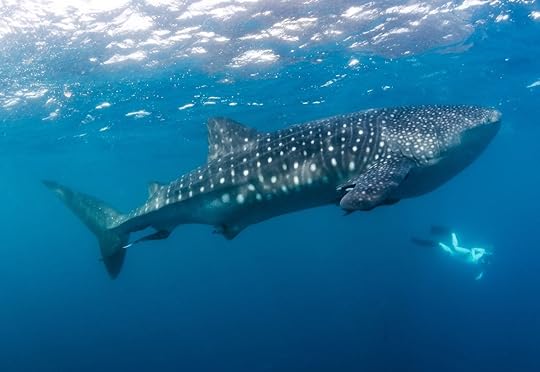
Photo: Joost van Uffelen/Shutterstock
The Osa Peninsula is the home to dozens of mangroves where time seems to grind to a halt. Lazily making their way in a kayak along the tranquil waters is a welcome relaxation to those who want to get away from civilization for a moment. The only possible reason to jump into the present from this state of zen would be to check out a crocodile sunbathing on a nearby rock or watch a heron grab unsuspecting mahi-mahi out of the water for lunch.
The marine life around the Osa Peninsula is just as rich as the terrestrial wildlife. Caño Island Biological Marine Reserve is home to manta and mobula rays, white sharks, Moorish idols, sea turtles, moray eels, all surrounded by an unspoiled reef. This is an excellent spot to dive, snorkel, and do underwater photography.
Discover hundreds of species at Corcovado National Park.
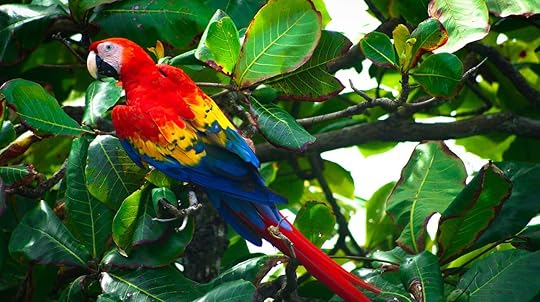
Photo: Jeroen Mikkers/Shutterstock
Known for being the most biologically diverse place in a country that already boasts among the richest selection of animal and plant varieties on the planet, Corcovado National Park is the ultimate playground for the natural explorer. The park is home to over 140 mammals, including 40 endangered jaguars, 71 reptiles, four types of venomous snakes, and 40 types of freshwater fish. Visiting with a certified, wildlife-telescope-carrying guide is recommended in order to get the most out of your visit and ensure absolute safety. Walking along the Sirena trail, observe howler and spider monkeys playfully jump from one palm tree to the next, tapirs frolicking, and a scarlet macaw flashing by. To explore the plant and bird kingdom, the two-mile-long San Pedrillo trail offers a rich repertoire of hawks, toucans, manakins, trogons, honeycreepers, and more. The other two trails — La Leona and Los Patos — are more low-key and are the ideal route for those who seek peace and quiet.
Fly above the rainforest and rappel down towering waterfalls.
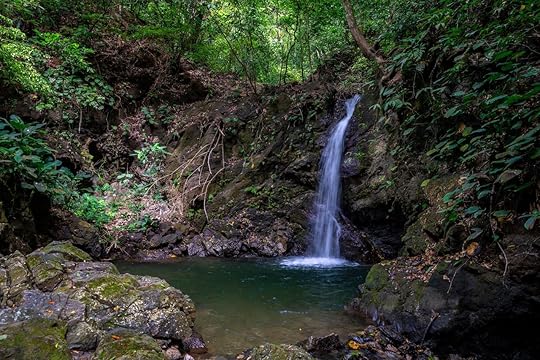
Photo: MyTravelCurator/Shutterstock
In true Costa Rica fashion, instead of walking through the rainforest, you can actually explore it from above by flying, climbing, and rappelling. The Adventure Park & Hotel Vista Golfo gets your adrenaline pumping with its three-hour Mega Mix Adventure Tour. You’ll combine feats such as walking across 17 tight rope formations made of logs and poles, swinging on the Tarzan swing, zip-lining over eight stations, and the 2,460-foot unobstructed “Superman” flight above the canopy. 

More like this: 9 reasons Costa Rica is the ultimate adventure destination -- beyond surfing
The post The Osa Peninsula is Costa Rica’s last wild frontier appeared first on Matador Network.

The history and future of emojis

Texting vernacular has come a long way since this form of communication first became a reality. Gone are the days when a person had to use letters, numbers, and punctuation to create a very limited range of facial expressions. Emoticons are still much in use today, but together with the rise of the smartphone, they’ve paved the way for their successors: emojis. Emojis, unlike emoticons, are image-based, which opens up many possibilities when it comes to what they can be of — expressions, actual people, everyday objects, animals, etc. And with a current total of 3,304 emojis in the official Unicode list, and more added every year, those possibilities are ever-growing.
The history of emojis

Photo: Shigetaka KuritaNTT Docomo
The first emojis came into the picture in 1999, created by Japanese designer Shigetaka Kurita for the telecommunications company NTT Docomo. The company was looking for a way to make communication easier in the face of a short character limit, particularly with pagers. Because Kurita had to work within the limited space of a 12-by-12 grid, his emojis had a low resolution that made them look pixelated.
His inspiration for the 176 emojis he created came from several sources. Besides the need for icons that would make business communication easier, he also took from popular culture in Japan. In an email interview with CNN in 2018, Kurita said, “In creating emoji, I found inspiration in pictograms, manga, and all sorts of other sources.” In his original set you’ll see emojis that can be used for various business purposes, such as an ATM, email, fax, and a generic building, but you’ll also see an emoji for a hot spring, a video game controller, and the 12 zodiac signs.
In a fitting nod to its origins, the word emoji comes from the Japanese kanji for e (絵, meaning “picture”), mo (文, meaning “write”), and ji (字, meaning “character”).
The evolution of today’s emojis

Photo: Emojipedia
While the emoji has existed since 1999, it did not become popular elsewhere in the world until a little after 2010 when they were officially integrated into Unicode, the universal code for all text language.
The first set of today’s emojis was released that same year on iOS devices. Android was a little late to the game, beginning support for emojis in 2012. It’s worth noting that while these operating systems share many of the same emojis, like the laughing and crying faces, the emojis do not look the same across different platforms. Once an emoji is approved, each member of Unicode — Apple, Google, Microsoft, etc. — design their own versions.

The “face with tears of joy” emoji on different platforms. From left to right: Apple, Google, Microsoft, and Samsung. Photo: Emojipedia
The first emojis are well-known, like the face with tears of joy, the ghost, nail polish, the woman dancing, and a flame. Although fun and much-loved, the first emojis available lacked cultural, ethnic, and gender diversity and did not fully represent the population of smartphone users.

Some of the first emojis released.
As more people used emojis, this lack of representation was questioned — some country flags were not included, and a variety of skin tones was non-existent. Emojis represented a wide range of topics but cruelly lacked diversity at the same time. It was only in 2015 that emojis diversified; the option to change the skin tone of certain emojis was added, with five different options, as well as emojis for same-sex couples.
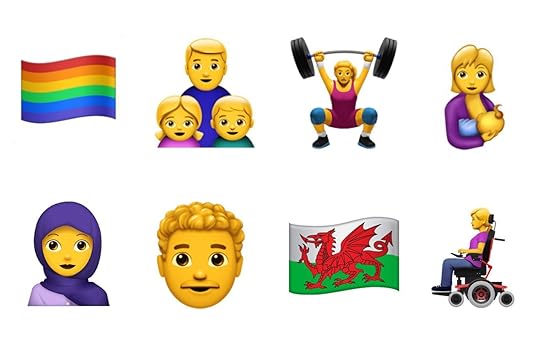
Emoji additions through the years.
From there, it’s been on the up and up. Every year sees the Unicode Consortium adding new emojis to the current list, as a new version of the Unicode standard is released annually. In 2016, highlights of added emojis were the pride flag, a single father, and a woman weightlifting. 2017 saw mythical creatures added, but it also saw gender-neutral options, a person breastfeeding, a person wearing a hijab, and individual flags for the nations within the United Kingdom. 2018’s new emojis included options for different hair types and colors. And last year’s major update saw representation for people with disabilities.
A bright future ahead

Photo: Emojipedia
The 2020 list of emojis has been finalized, and the 117 new additions will be rolled out throughout the year; these include even more gender-neutral options, such as people in wedding attire, a person bottle-feeding a baby, and a gender-neutral partner to Santa Claus. There’s also more cultural variety; in terms of food, there’s a tamale, fondue, and bubble tea, and besides that, there’s a boomerang, long drum, and piñata.

Photo: Emojipedia
Even with this year’s list set, the consortium is already working toward the future. Typically, the deadline for proposals for new emojis must be submitted by March 31 to be considered for inclusion in the following year’s list.
However, as with a great many other things, this year, the process has been affected by COVID-19. Due to the health crisis, there will be no new emojis released in 2021 as the schedule will be pushed back. Mark Davis, Unicode Consortium president, said in a statement, “Under the current circumstances, we’ve heard that our contributors have a lot on their plates at the moment and decided it was in the best interests of our volunteers and the organizations that depend on the standard to push out our release date.”
The silver lining is that designers have until September of this year to submit proposals for new emojis (emojis designs are crowdsourced; anyone can propose new emojis). Additionally, while no new emojis will be released next year, there is still a possibility that new emoji sequences will be released. (Emoji sequences are, essentially, a particular emoji with multiple iterations such as one with multiple skin tones or hairstyles and colors.)

Photo: O’Plérou Grebet
While emojis have made strides in terms of diversity, there’s always more that can be done. There are still a ton of cultures that are not represented, whether it’s through emojis of people, food, activities, or inanimate objects. Anyone can start working on their proposal for future emojis, but innovative creators like O’Plérou Grebet are filling that void while we wait.
Grebet, a 22-year-old graphic design student from Ivory Coast, created 365 emoji-like stickers depicting the daily life and culture of Ivory Coast and other African countries in 2018. They depict food items like mashed plantains and cassava, traditional cookware, instruments, traditional garments, as well as local facial expressions, among many others.
View this post on Instagram
#Zouzoukwa Nº228: Foulard 2 (autre manière d’attacher) [inspiration du foulard : @nadjelika]
A post shared by O’Plérou Grebet (@creativorian) on Aug 16, 2018 at 1:07pm PDT
These stickers are available on his app, Zouzoukawa, which can be downloaded on both iOS and Android phones; the word zouzoukawa means “image” in Bété, one of the languages spoken in Ivory Coast. They can be copy and pasted and used as emojis in messenger apps like iMessage and Whatsapp; there’s even an option to add the stickers to the sticker portion of the Whatsapp keyboard for quick access.
Ever the forward-thinker, Grebet is working toward getting some of his emojis included in the Unicode standard and has already personally submitted proposals for some, such as the “I told you so” one (photo below). He plans to create even more emojis, this time from other parts of Africa, such as the north, central, east, and south, when he’s able to travel again to do cultural research after the pandemic is over, he tells Matador Network.
View this post on Instagram
#Zouzoukwa N°78: Tu as vu non / Je t’avais dit oh / Hum / Tu vas voir
A post shared by O’Plérou Grebet (@creativorian) on Mar 19, 2018 at 2:18pm PDT
Then there are organizations like Emojination that are pushing for more inclusive emojis by assisting in the submission and review process. Emojination has successfully helped get the dumpling, hijab, sauna, red envelope, broccoli, and DNA emojis into the official list, but it’s not stopping there. On Emojination’s website is a list of active ideas that the group is working on, which include a plate of plantains, beans, a durian, a pyramid, a dashiki tunic, and incense.

Active emoji ideas, the designs are not final. Photo: Emojination
We can only hope that our phones will provide as much cultural diversity as possible in the years to come because we’d love to have a way to express our love for Senegalese thieboudienne, our fondness for the Asian squat, and the delight that is hummus. 

More like this: External chargers are a life-changing travel necessity
The post From piñatas to West African food, emoji diversity is improving, but there’s still a ways to go appeared first on Matador Network.

Inside the era of virtual classrooms

The coronavirus pandemic is teaching humans all kinds of new things. How to occupy our Saturday nights when the bars are closed, how to get creative with at-home gym workouts, mastering the art of a social-distancing happy hour. In addition to teaching us these new skills, the virus is also changing the way we teach each other. With most schools around the country closed through the end of the year, learning has gone virtual. That’s new and potentially terrifying territory for many teachers who are accustomed to traditional classroom-style learning.
From kindergarten to universities, spring 2020 is the semester of online learning. That means teachers must not only worry about lesson plans and student engagement — already a monumental task — but also become technology wizards. While this poses a series of challenges, it’s also inspiring teachers to get creative with their new digital medium and explore the innovative possibilities of online learning that may endure long after this crisis is over.
From classrooms to Zoom
Social distancing didn’t exactly introduce the world to online learning. Technology has had an enormous presence in the classroom for years, and many children and adults were already taking advantage of online learning opportunities. What social distancing has done, however, is make virtual learning mandatory and necessitated a rapid shift in teaching style.
With just a few days to adjust, teachers have been tasked with adapting their curriculums to work in a virtual environment. And that swift transition hasn’t always been easy.
Megan Baron, a kindergarten teacher in Aurora, Colorado, acknowledged that “there was, and still is, a steep learning curve in this transition, but everyone is really working as hard as they can to make it as smooth as possible. We are all taking on a lot of new technology, strategies, and methods for what works best online. There are a lot of intricacies to think about — making sure that education is equitable in all ways during remote learning.”
To retain a semblance of connectivity, Baron does “weekly Zoom virtual meetings so that the kids can see me and their classmates. They have also responded well to online learning through Flip Grid, which lets them record brief videos of themselves, and other students can then watch their classmates’ videos back. As a teacher I can also leave comments and feedback on all of their posts and videos.”
For higher grade levels, however, the transition to online learning might prove a bit smoother. Academic institutions are more likely to be set up for online courses, and students have likely had more experience with technology and virtual learning.
Matthew Meltzer, the senior staff writer at Matador Network, also teaches writing for digital media at the University of Miami. Of his classroom’s transition to virtual learning, he says, “It was smooth in the sense that UM has a pro Zoom account, and it was easy to set up. Students understood how to set it up pretty easily. Doing lectures online isn’t hard, necessarily, since it’s really the same info presented with a screen. I had to make some small adjustments for stuff like quizzes but otherwise, technically, I didn’t find it too difficult.”
Getting online is one thing, learning online is another
Most teachers would probably tell you that one of the most rewarding aspects of their job is engaging with students and encouraging lively classroom discussions. Online learning makes this incredibly difficult. Although Meltzer employs various methods to promote student engagement, maintaining a cohesive classroom environment still proves challenging.
“You can’t really create a conversation,” he says. “You can’t create an environment. You can’t play off the energy in the room. It’s just a bunch of people staring at screens, and you’re trying to keep them engaged. And that’s really hard.”
On making sure students are paying attention, Meltzer says, “I try to get them to ask questions and have quizzes on the material. I require their video to be on, so I know they’re not making pico de gallo or doing laundry. This particular class, they weren’t ones to overly participate in class anyway, so there’s been a lot of dead air.”
For younger students, the virtual divide is even tougher.
According to Baron, “In kindergarten so much of our learning is about interacting with each other, learning to play and share together. This is virtually impossible to do without being physically together. Not being able to see the students every day is a huge drawback. I miss them so much!”
It’s not all negative

Photo: Maria Symchych/Shutterstock
Despite the clear inconveniences of teaching remotely, it’s not all bad for teachers. Just as students now have more flexibility to wake up late, roll out of bed, and simultaneously brush their teeth and take a pop quiz, teachers also find themselves with more freedom.
“Every day can be pajama day,” Baron joked, “and I can sleep a little bit later in the mornings.”
Indeed, for teachers who spend enough time outside the classroom grading papers and prepping lesson plans, saving precious commuting time is incredibly valuable. Meltzer similarly appreciates the time saved by foregoing the commute.
“I save an hour or two on not having to take the train to campus and back,” he said. “When I have them doing in-class writing, I can go make pico de gallo or do laundry or something else, so it has freed up some more time. You also sometimes get little glimpses into their lives, like posters on the wall in the background or people who walk by in the background to mess with them. So that’s kinda fun.”
Beyond simple convenience, online learning also has some educational upsides. Since transitioning to virtual learning, Baron says she doesn’t have to deal with behavior management in the classroom, which once took up a large portion of her time and distracted from learning objectives.
“This is a huge factor in the classroom,” she said. “During virtual learning each student is watching, listening, and learning the information and assignments on his/her own schedule. My colleagues are also coming together in a way that is above and beyond anything I’ve experienced in 18 years of teaching. Everyone is working together so well, even though we aren’t physically together.”
The future of virtual learning
Like many other aspects of post-pandemic life, education won’t exactly go back to “normal.” In other aspects of our lives, Zoom will probably play a bigger role in our social interactions. We’ll instinctively wash our hands more obsessively than we used to. And education — which had already been making big strides toward incorporating classroom technology — will likely embrace some online learning methods that proved successful.
While teachers will be relieved to get back into the classroom, and probably won’t lament the passing of the virtual-learning era, that doesn’t mean some strategies and techniques won’t carry over.
“I will absolutely use FlipGrid in my regular instruction,” Baron said. “It’s a great way to let students video themselves quickly and easily. I will also offer Zoom as a way to hold a parent-teacher conference if parents are unable to come into school to meet.”
Meltzer, however, is less eager to incorporate virtual learning into the classroom. “I might do things like Zoom conferences or Skype for guest speakers who are in different places,” he concedes, “or do it myself if I’m traveling and want to hold class anyway. I think learning that has been valuable so now I know that I can still hold class or have people come to class, even if they can’t be in Miami.”
As virtual teaching continues, the benefits and drawbacks of remote learning will become clearer. Teachers are doing their best to adapt to a difficult situation, evolve their teaching strategies, and creatively engage students. Until the whole picture comes into focus, however, the true merits of remote learning remain up for debate. 

More like this: How to use the unschooling approach to ease the stress of homeschooling
The post How teachers are adjusting to virtual classrooms appeared first on Matador Network.

What to do in St. Augustine, Florida

St. Augustine, on the coast of northern Florida, is the oldest continuously occupied European settlement in the United States. This town of about 15,000 has a rich and complicated history that’s reflected in its handsome architecture and dining options shaped by the city’s diverse cultures. St. Augustine also offers options for water sports, historic tours, ghost and pirate lore, and exotic animal encounters — all of which make this picturesque city just an hour south of Jacksonville the ideal place for a weekend visit.
Getting around
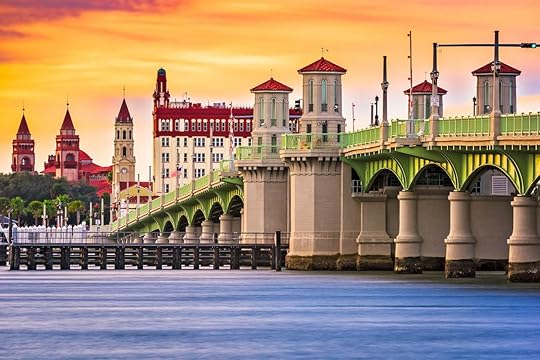
Photo: Sean Pavone/Shutterstock
St. Augustine doesn’t have a commercial airport, so if driving from home isn’t an option, you’ll have to fly into Jacksonville or Orlando and rent a car. Jacksonville is the closer of the two cities; Orlando is just under two hours south. We flew into Jacksonville, rented a 2020 Chevy Blazer to comfortably stash all of our luggage plus any souvenirs we’d collect along the way, and headed south to St. Augustine. Once in town, it’s necessary to drive or take a rideshare between the beach and historic district. The best course of action is to tackle one area per day, allowing you to walk between the attractions you want to see. If you’re going out bar-hopping in the evening, it’s easy to get a rideshare back to your hotel.
European-style architecture, Floridian hospitality

Photo: Sean Pavone/Shutterstock
Florida is 5,000 miles from the Mediterranean Sea, but nowhere in the south combines Euro-influenced architecture with beachy, coastal Floridian hospitality quite like St. Augustine. The architecture is as much a part of the show here as the beaches, starting with the Villa Zorayda Museum. Built in 1883 as the winter residence of hardware merchant and author Franklin W. Smith, this magnificent structure is a sight to behold, both inside and out. The Moorish Spanish revival museum includes architectural details borrowed from the Alhambra Palace in Granada, and it was built using Smith’s unique construction method: poured concrete and crushed coquina shells. The gilded, colorful interior is teeming with priceless antiques, including a sacred rug made from cat hair that’s more than 2,400 years old. The self tour of the museum takes about 45 minutes, and you can also reserve a docent-led guided tour in advance.
Another architectural hub is Flagler College, just off King Street across from the Villa Zorayda Museum. This private college boasts one of the most historically beautiful campuses in the country. The structure, planned and designed in part by oil mogul Henry Flagler, was finished in 1888 when it opened as the Hotel Ponce de Leon, an accommodation that was much needed in St. Augustine at the time. The building’s Spanish Renaissance style was, and still is, considered an architectural and engineering marvel.
Tours of the Flagler College campus, which include a comprehensive history of the buildings and grounds, take place every day at 10:00 AM and 2:00 PM. The afternoon tour allows you to do both the museum and college in the same day. Afterwards, sneak across the Bridge of Lions for a drink at Sarbez!, which serves up local craft beer and wine and a huge list of grilled cheese sandwiches. If you go on an evening with live music, expect it to be awesome but very loud.
If you’re a true architecture buff, book your overnight at the Casa Monica Resort & Spa, located in the center of St. Augustine’s Historic District within walking distance of many attractions and restaurants. The decor of the 1888 structure draws on Spanish Baroque Revival and Moroccan styles, although the building served not only as a hotel but also as a county courthouse. Another good place to stay in the bustling Historic District is the DoubleTree by Hilton Hotel, as it has a convenient location and amenities like a shuttle, which is helpful should you need a lift back after an evening on the town.
Watch the town’s cultural story play out in front of you
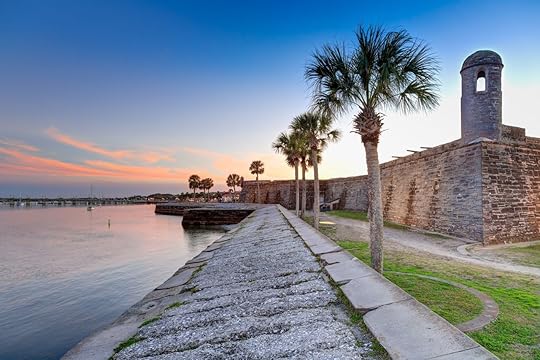
Photo: jo Crebbin/Shutterstock
Castillo de San Marcos was finished in 1695, which makes it the oldest masonry fort in the continental United States and the oldest structure in St. Augustine. The fortress was built by the Spanish to protect their claims in the New World, and when it came under fire by British troops for the first time in 1702, enemy forces were unable to penetrate its walls. Today, you can explore the many nooks and crannies of the fort, watch cannon firings, and learn about its long and complicated history from the many experts on site. The roof also offers a great view of the city and the water, so try your best to go on a clear day.
The town’s Colonial Quarter also offers live demonstrations along with plenty of boutique shops to peruse. Located along a stretch of St. George Street, this historic area is lined with storefronts, restaurants, bars, and museums. Along the route, you can catch a concert, watch a live musket demonstration, learn about blacksmithing, and shop wares from a variety of local artisans and businesses. After you’ve worked up an appetite, grab a bite at Columbia, a gorgeous Cuban and Mexican restaurant with a huge menu, or Prohibition Kitchen, a gastropub serving locally sourced fare.
Experience the living, the dead, and the water
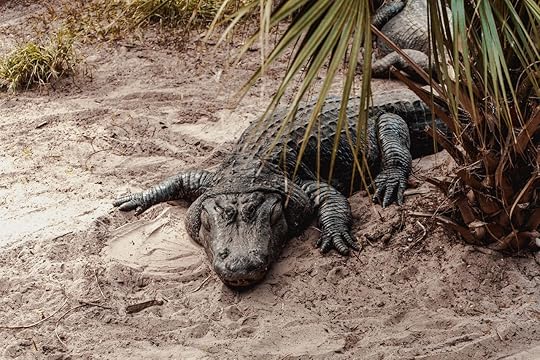
Photo: lazyllama/Shutterstock
The St. Augustine Alligator Farm Zoological Park has been open for more than 100 years and is a leader in the species’ conservation. Here you can get up close and personal with reptiles, including the critically endangered orinoco crocodile and endangered Malaysian giant pond turtle, along with lemurs, monkeys, and exotic birds like the blue-throated macaw. You can even explore a python cave or zipline over the zoo if you’re looking for an edgier experience.
There’s also the option to take a guided ghost tour. Guided by professional storyteller Dion Moore, this small group walking tour combines the history and legends of the oldest US city into one freaky evening. Moore will take you to several supposedly haunted landmarks like the Oldest Wooden Schoolhouse, the Huguenot, and Tolomato Cemeteries, an old funeral parlor, as well as the ghostly St. George Inn. Whether you believe in the supernatural or not, the tour portrays the spine-tingling history of St. Augustine.
To mellow yourself out after the ghost tour, head over to the Intercoastal Waterway. Here, Raging Water Sports hosts guided water tours from the Matanzas River to the south and Tolomato River to the north. Jump on a jet ski or rent a motorboat to take advantage of bright sunny days where you can tour Guana State Park and the city’s historic bayfront. Expect gorgeous views and some wildlife sightings, like pelicans, ospreys, bottlenose dolphins, and even manatees in the summer months.
Where to eat and drink
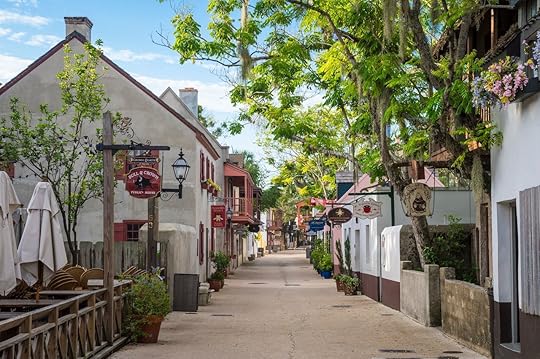
Photo: lazyllama/Shutterstock
Dining along Florida’s northern coast is about more than barbecue and fried fish. The cuisine of St. Augustine, in particular, has a distinctly European flair to it, led by Costa Brava. Located inside the Casa Monica Resort & Spa, this semi-formal restaurant infuses Mediterranean flavors with Spanish-style tapas plates. Order an expertly made martini or spicy margarita from the bar before diving into the food menu, meant to be shared among large tables. Start with a perfectly cooked plate of Florida white shrimp seasoned with garlic, olive oil, and adobo spice, or try the Hunter’s Board, piled high with Spanish cheese, charcuterie, nuts, and olives.
Another option popular among locals and regular visitors is the Ice Plant Bar. This stunning bar and restaurant is housed in a former ice plant in a building that dates back to 1927. Look up when you enter because you can still see the crane rails above the bar that used to lift huge blocks of ice to be broken down for customers. Now that gorgeous ice is used to chill the establishment’s signature cocktails like the Mazzy Star, which is mixed with vodka, Absentroux (an absinthe liqueur), falernum, grenadine, and lemon. The food here is excellent too, especially the homemade potato chips and Fancy BLT. When you’re done eating and drinking, head downstairs and take a tour or tasting at the connected St. Augustine Distillery.
The town’s best vegetarian meal is found at Sprout Kitchen. Located on a charming side street off the Colonial Quarter, this plant-based cafe and juice bar is a perfect place to stop in for breakfast or lunch. Inside the sunny space, you’ll find a variety of fresh, cold-pressed juices, smoothies, vegan and gluten-free baked goods, and savory dishes like a delicious Caesar salad with crispy chickpeas. Don’t miss the avocado toast topped with killer coconut “bacon,” pink salt, and cayenne pepper. 

More like this: Biscayne National Park is the perfect day trip from Miami
The post St. Augustine combines European charm with Floridian hospitality appeared first on Matador Network.

Social distancing park in Austria

Right now, social distancing must conform to the pre-existing spaces in our lives. It’s up to us to navigate parks, sidewalks, and walking trails in a safe and responsible way, because those spaces were not built to accommodate the reality of COVD-19.
Austrian design studio Precht wants to make social distancing easier for those who live in urban areas and still want to enjoy green spaces, so it designed “Parc de la Distance.”

Photo: chrisprecht/Instagram
The ingenious and beautiful curvy park would have tall and wide hedge divisions, to allow people to be outdoors while keeping a safe distance from one another. The park would feature several winding 20-minute routes that would lead to the center of the park where individual water fountains would be located. Gates situated at the entrances and exits to each route would indicate whether a route is occupied.

Photo: chrisprecht/Instagram
The park would not only be a practical way to spend time in nature during the COVID-19 crisis, but it’s also a beautiful piece of landscape design that would transport urbanites into a sanctuary of peace and solitude long after the health crisis has passed.
During an interview with Dezeen, studio founder Chris Precht explained, “For now, the park is designed to create a safe physical distance between its visitors. After the pandemic, the park is used to escape the noise and bustle of the city and be alone for some time. I lived in many cities, but I think I have never been alone in public. I think that’s a rare quality.”
“Parc de la Distance” has been proposed for Vienna, Austria, which was rated the world’s most livable city in 2018 and 2019. 

More like this: These elevated green spaces are the future of urban parks
The post Austrian design studio plans stunning maze-like park for social distancing appeared first on Matador Network.

Lion sleeping on roads in Kruger NP

Animals have been taking true advantage of lockdown conditions all around the world, filling the void left but humans on city streets and in parks.
While mountain goats take over Wales and coyotes make themselves at home in the empty streets of San Francisco, in South Africa’s Kruger National Park, lions, impalas, zebras, African wild dogs, hyenas, and giraffes have taken up residence on the roadside and on golf courses.
Park ranger Richard Sowry took some photos of a pride of lions sleeping peacefully on the tarmac road just outside Orpen Rest Camp.
Kruger visitors that tourists do not normally see. #SALockdown This lion pride are usually resident on Kempiana Contractual Park, an area Kruger tourists do not see. This afternoon they were lying on the tar road just outside of Orpen Rest Camp.
Matador Network's Blog
- Matador Network's profile
- 6 followers



